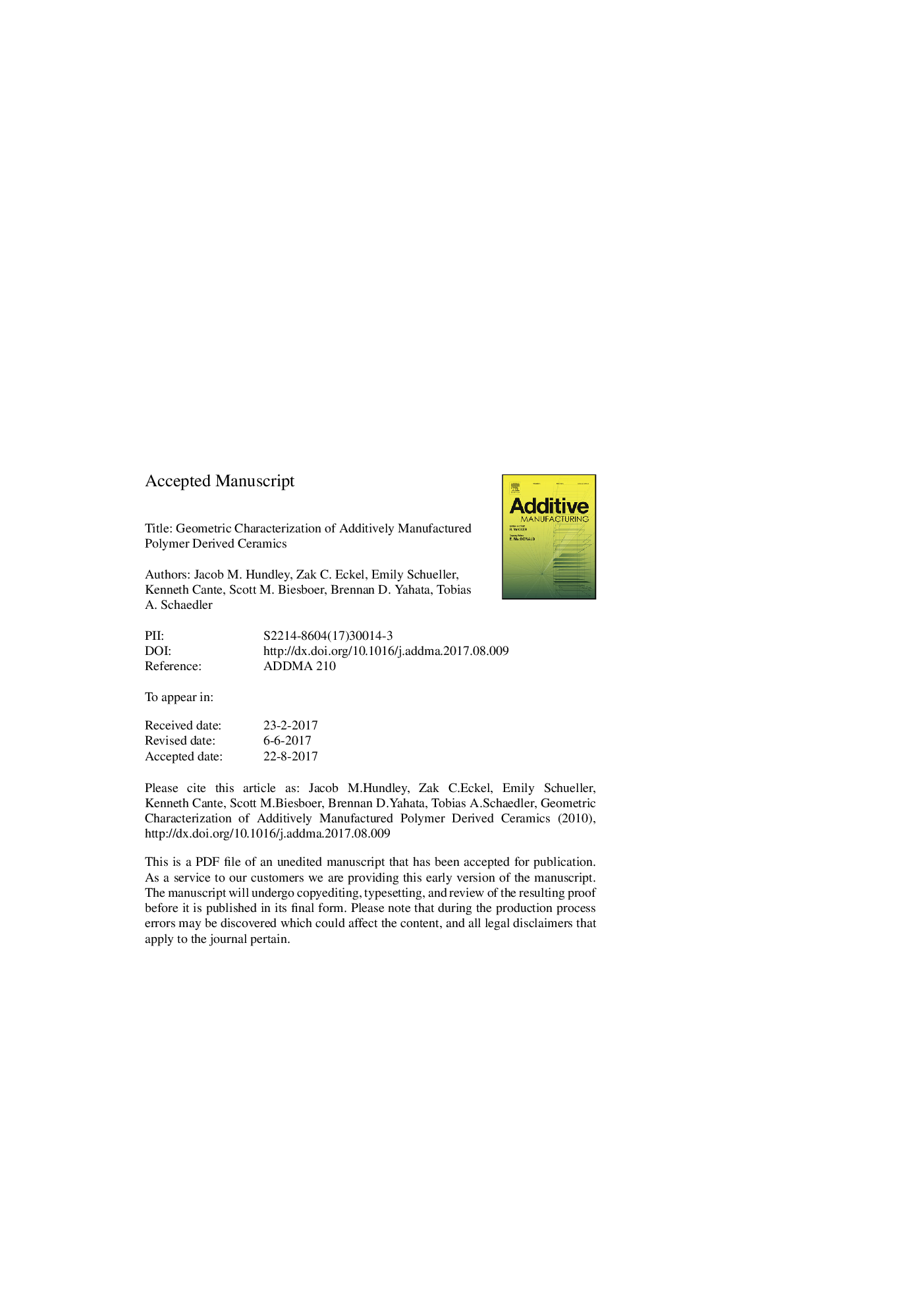| Article ID | Journal | Published Year | Pages | File Type |
|---|---|---|---|---|
| 5020001 | Additive Manufacturing | 2017 | 19 Pages |
Abstract
The high hardness, melting temperature and environmental resistance of most ceramic materials makes them well-suited for propulsion, tribilogical and protective applications. However, these same attributes pose difficulties for manufacturing and machining of ceramics and ultimately limit the achievable design space of these materials. Recently, a new class of preceramic photopolymers has been developed that enables additive manufacturing of ceramics using commercially available stereolithography systems. By consolidating preceramic monomers via layer-wise exposure to ultraviolet light and subsequently pyrolyzing under an inert atmosphere to form a ceramic, this method allows for complex geometry parts that cannot be produced with traditional sintering, pressing or vapor infiltration processes. In order to retain geometric fidelity and generate flaw-free microstructures, volumetric and gravimetric changes during the polymer-to-ceramic conversion must be quantified. To this end, we present x-ray micro-computed tomography (micro-CT) measurements of the dimensional stability and uniformity of additively manufactured silicon-based ceramics as a function of geometry and processing conditions.
Related Topics
Physical Sciences and Engineering
Engineering
Industrial and Manufacturing Engineering
Authors
Jacob M. Hundley, Zak C. Eckel, Emily Schueller, Kenneth Cante, Scott M. Biesboer, Brennan D. Yahata, Tobias A. Schaedler,
